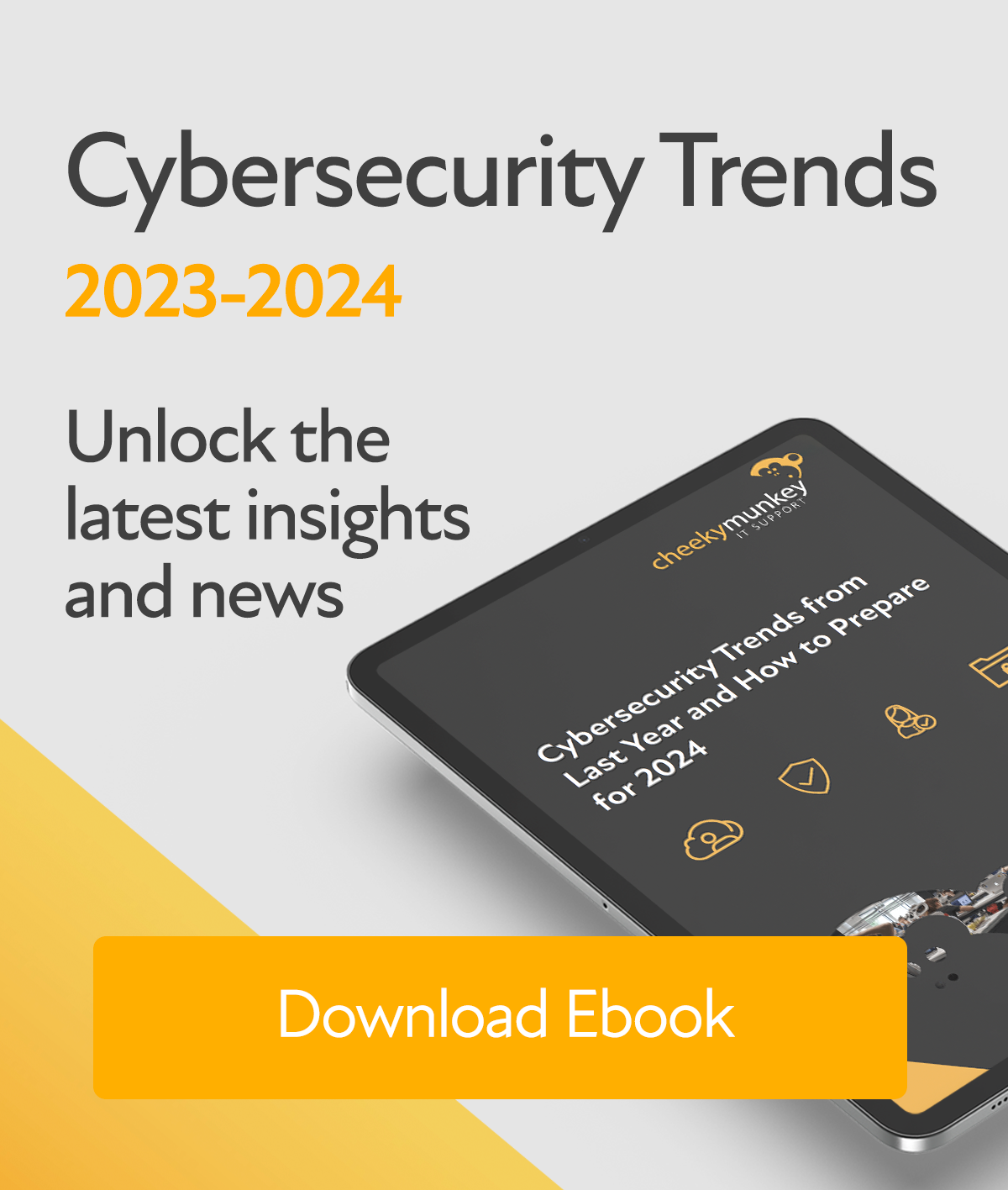Cybersecurity threats have been on the rise over the past few years – evolving in vector and complexity. Changes in business landscapes, including remote working and the increase in cloud storage is only making the issue more pressing.
To keep you updated and prepared to respond to cyber attacks, we have compiled a list of the top 10 cybersecurity threats to help understand what they may mean for your business.
Top 10 Cybersecurity Threats
1. Malware
Malware is the generic term for any type of malicious software designed to harm or exploit a device, service or network. Cybercriminals use different methods to get malware into devices such as clicking a link or opening an attachment. Some may even use vulnerabilities in browsers to install themselves without the user’s involvement. Some examples of malware include trojan viruses, worms and spyware.
Once malware is installed, it monitors the users activity and sends confidential data to the attacker. This can then cause further damage as the attacker can easily identify other vulnerable targets within the network.
2. Ransomware
Ransomware is a serious cybersecurity threat which can affect individuals and businesses alike. In most cases, ransomware gains access to a device and infects the network by encrypting either the entire system or specific data files. This means completely denying access to the owner, which in some industries can be a huge problem if time-sensitive files cannot be opened over a long period of time. The ransom is then demanded from the victim, which can result in massive financial losses.
3. Internet of things
The internet of things (IoT) describes a network of interconnected devices, softwares, sensors and other elements which helps the world be connected. This includes but isn’t limited to business software, personal home devices, mobiles and vehicles. This makes it incredibly convenient for organisations to have fantastic connectivity, without human interaction – such as employees accessing files from remote locations.
However, the IoT has also made it convenient for cybersecurity attackers. If hackers are able to gain access into one device, it opens up a gateway to a whole host of data associated with other devices, making it easier to mass-export confidential information, damage multiple devices, or even interrupt company-wide operations.
4. Internal cybersecurity skill gap
One of the biggest cybersecurity threats to business comes from within the companies themselves – inadequate cybersecurity training for employees. When employees aren’t sufficiently trained to be cautious of cybersecurity threats, and know how to react, they can often fall responsible for data breaches.
For example, phishing attacks which target devices through email can be incredibly persuasive and will often appear legitimate to those on the receiving end. They may imitate a senior member of the organisation or a well-known company. If employees are unable to identify these threats, they’re likely to trigger them, making it easy for the attacker to access personal and sensitive information.
5. Social engineering
Social engineering attacks take a social approach to obtaining critical information and often involve psychologically manipulating a user into performing an action, or multiple actions, that will reveal a company’s data. As mentioned above, phishing emails is an example of social engineering threats, along with baiting, malvertising and scareware – all of which revolve around deceiving the user into sharing private information.
6. Cloud vulnerabilities
Cloud computing has become incredibly popular across the globe, which has sparked the risk of major data breaches. Confidential information, such as financial documents or medical reports in certain industries, are uploaded to the cloud. This makes cyberattackers more insistent on finding ways to exploit it. Plus, it has increased the amount of monitoring and integration that’s required to keep it secure which is why many businesses try to protect their data by using cloud security solutions. The more that get uploaded to the cloud, the higher the risk of cybersecurity threats.
7. Patch management
Outdated software is a very common cause of cyber attacks. When software is outdated, or requires system updates, weak links are created in the device system, leaving data non-secure and vulnerable to attacks. This makes it so important to keep all devices and softwares updated. So as soon as updates are available, ensure they are run across your business and be cautious of patches to avoid cybersecurity threats.
8. Artificial intelligence
Artificial intelligence (AI) brings both benefits and drawbacks to cybersecurity. It’s thought to have improved security solutions, however can be leveraged by cybercriminals to overcome security. This has become more of an issue in recent years as AI has become more accessible. In the past, only large companies with big budgets and resources could implement AI technologies. Now it can be developed on individual devices. This makes it more appealing for hackers, who use AI to create bots that pass as human users to alter the behaviour of malware.
9. Third parties
Almost every business uses some type of third party service, whether it’s for accounting support or payment processing. This stems down to it being rather difficult to run a business without them.
However, relying on third parties can make a company more vulnerable to cybersecurity attacks. This is due to the knock on effect that could occur if the third party falls victim to a security breach. Once the attacker has exploited the third parties data, they’re more likely to be able to break into other related companies personal information.
10. Misinterpreting compliance for security
The final cybersecurity threat also comes internally from a business. Companies have to meet certain security requirements, as standard practice. However, some fall into the trap of becoming certified for security management, but fail to maintain security policies all-year round. Simply being certified isn’t enough to protect your business from potential breaches, and cybersecurity strategies must stay in place.
Cybersecurity threats have increased rapidly over the past few years. Being cybersecurity aware ensures your organisation is equipped to prevent a successful data breach. If you need more support, we offer IT support and security bundles that will suit your business requirements.


 Previous
Previous







